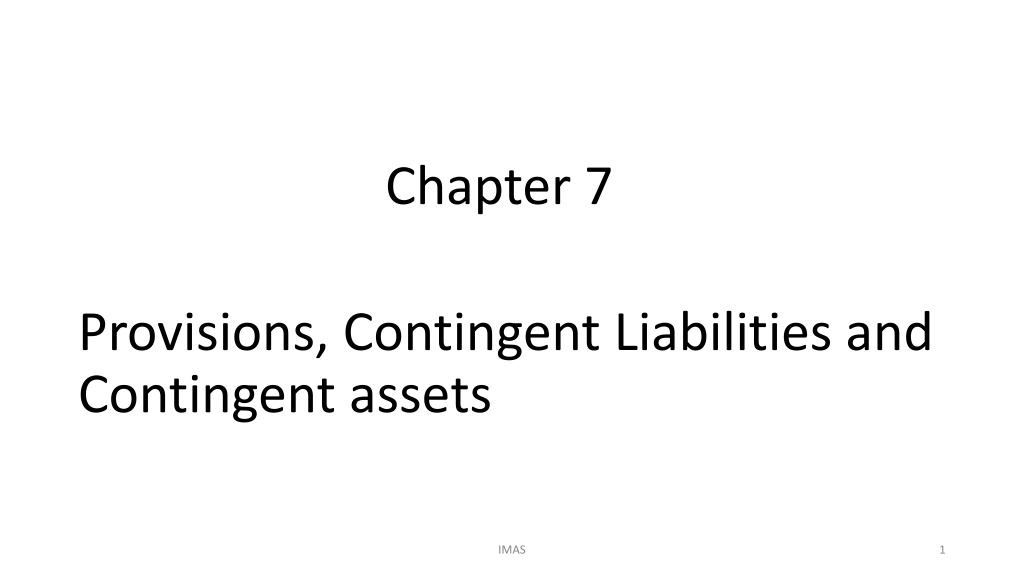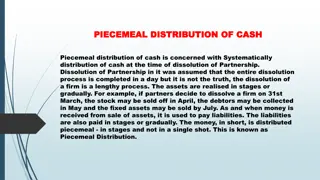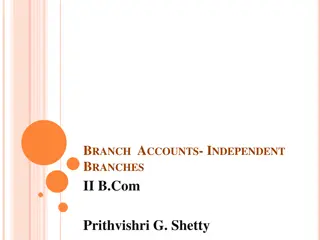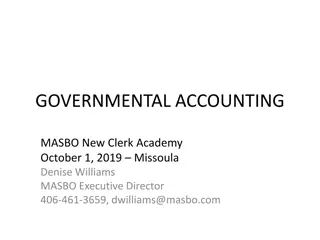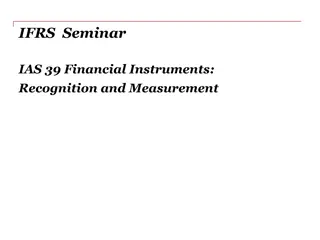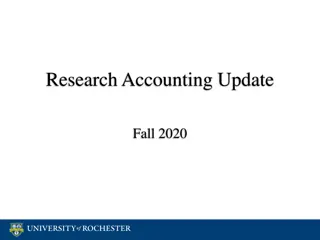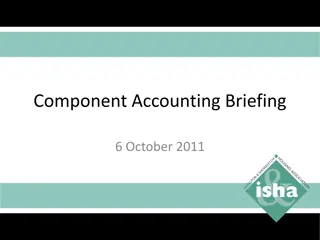Understanding Provisions, Contingent Liabilities, and Assets in Accounting
This content covers the concept of provisions, contingent liabilities, and contingent assets in accounting, highlighting the criteria for recognizing a liability as a provision. It explains the types of obligations, the importance of a reliable estimate, and specific applications such as onerous contracts and restructuring.
Download Presentation

Please find below an Image/Link to download the presentation.
The content on the website is provided AS IS for your information and personal use only. It may not be sold, licensed, or shared on other websites without obtaining consent from the author. Download presentation by click this link. If you encounter any issues during the download, it is possible that the publisher has removed the file from their server.
E N D
Presentation Transcript
Chapter 7 Provisions, Contingent Liabilities and Contingent assets IMAS 1
IAS 37 A provision is a liability of uncertain timing or amount. A liability is a present obligation of the entity arising from past events, the settlement of which is expected to result in an outflow from the entity of resources embodying economic benefits IMAS 2
Recognition of a liability A provision should be recognised when: an entity has a present obligation (legal or constructive) as a result of a pa st event it is probable that an outflow of resources embodying economic benefits will be required to settle the obligation (The outflow of resources must be considered to be more likely than not, and) a reliable estimate can be made of the amount of the obligation. If any one of these conditions is not met, no provision may be reco gnised. *Where there are a number of similar obligations, probability is assessed acr oss the entire class of obligations rather than individually. IMAS 3
Obligations The obligation can be: legal, i.e. arising from a contract legislation other operation of law constructive, i.e. the entity has created a valid expectation via established pattern of past practice published policy or statement IMAS 4
Reliable estimate The standard states that situations in which a reliable estimate cannot be made should be rare. The estimate should be: the best estimate of likely outflow a prudent estimate discounted when time value of money is material IMAS 5
Specific application Provisions cannot be made for future operating losses as they do not meet the definition of a liability (they are an expectation rather than an obligation) An onerous contract is a contract in which the unavoidable costs of meeting the obligations under the contract exceed the economic ben efits expected to be received under it. A provision is required for the 'least net cost' of exiting the contract, which is the lower of: cost of fulfilling the contract any compensation/penalties payable for failing to fulfil it IMAS 6
Restructuring A restructuring is a programme planned and controlled by management that materially changes the scope of business undertaken or the manner in which that business is conducted. A provision can only be made if: the entity has a detailed formal plan, and has raised a valid expectation in those affected that it will carry out the restructuring by starting to implement it, or announcing it Provision can then only be made for costs that are: necessarily entailed by the restructuring, and not associated with the ongoing activities of the entity. ***Costs specifically not allowed include retraining/relocation of existing staff, marketing and investment in new systems IMAS 7
Contingent liability a possible obligation that arises from past events and whose existence will be confirmed only by the occurrence or non- occurrence of one or more uncertain future events not wholly within the control of the entity, or a present obligation that arises from past events but is not recognised because: it is not probable that an outflow of resources embodying economic benefits will be required to settle the obligation, or the amount of the obligation cannot be measured with sufficient reliability. IMAS 8
Accounting for a contingent liability A contingent liability is: not recognised disclosed in a note, unless the possibility of outflow is remote IMAS 9
Contingent asset is a possible asset that arises from past events and whose existence will be confirmed only by the occurrence or non- occurrence of one or more uncertain future events not wholly wi thin the control of the entity. IMAS 10
Accounting A contingent asset is: not recognised disclosed in a note, if an inflow is considered probable. IMAS 11
Disclosures required for contingent liabilities and assets Description of nature of contingent liability/asset An estimate of its financial effect An indication of uncertainties relating to amount or timing of outflow/inflow For contingent liabilities, the possibility of any reimbursement IMAS 12
Summary Degree of probability of an outflow/inflow of resources Liability Asset Virtually certain Recognise Recognise Probable Make a provision Disclose by note Possible Disclose by note No disclosure Remote No disclosure No disclosure IMAS 13
